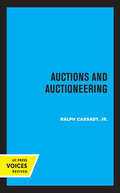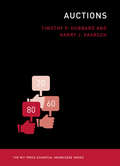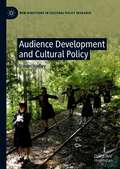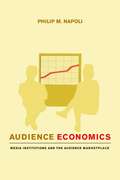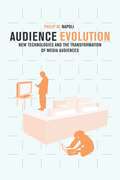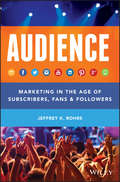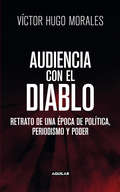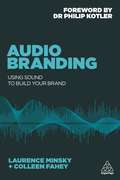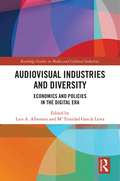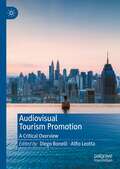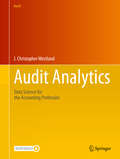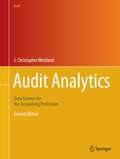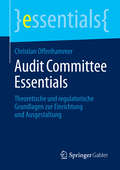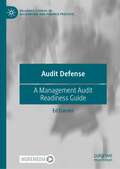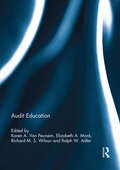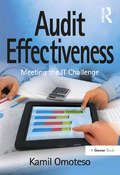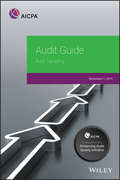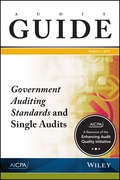- Table View
- List View
Auction Vignettes
by Guhan Subramanian Michelle KalkaThis case consists of a series of short vignettes illustrating several auctions: the auctions for Hillary Clinton's biography and the talents of baseball star Alex Rodriguez; eBay online auctions; the Turkish government's auction for a 51% stake in its state-run gas station chain; and the 1999 merger and takeover involving Warner-Lambert, American Home Products, and Pfizer.
Auction for Burger King (A)
by Carliss Y. Baldwin James W. QuinnPaul Walsh, CEO of Diageo, must evaluate bids received in an auction of the Burger King restaurant unit. Describes how Diageo came to own Burger King, the attempts to turn the unit around, the strategic reasons for its sale, the auction process, and various bidders' tactics to gain advantage in the auction. Four bids with quite complex terms arrive by the auction deadline. Walsh is facing the task of ranking the bids and determining what enhancements to the inferior bids would make them equivalent to the first-ranked bid.
Auction for Burger King (B)
by Carliss Y. Baldwin James W. QuinnAn abstract is not available for this product.
Auctions and Auctioneering
by Ralph Cassady Jr.This title is part of UC Press's Voices Revived program, which commemorates University of California Press’s mission to seek out and cultivate the brightest minds and give them voice, reach, and impact. Drawing on a backlist dating to 1893, Voices Revived makes high-quality, peer-reviewed scholarship accessible once again using print-on-demand technology. This title was originally published in 1967.
Auctions: The Mit Press Essential Knowledge Series (The MIT Press Essential Knowledge series)
by Timothy P. Hubbard Harry J. PaarschHow auctions work, in theory and practice, with clear explanations and real-world examples that range from government procurement to eBay.Although it is among the oldest of market institutions, the auction is ubiquitous in today's economy, used for everything from government procurement to selling advertising on the Internet to course assignment at MIT's Sloan School. And yet beyond the small number of economists who specialize in the subject, few people understand how auctions really work. This concise, accessible, and engaging book explains both the theory and the practice of auctions. It describes the main auction formats and pricing rules, develops a simple model to explain bidder behavior, and provides a range of real-world examples.The authors explain what constitutes an auction and how auctions can be modeled as games of asymmetric information—that is, games in which some players know something that other players do not. They characterize behavior in these strategic situations and maintain a focus on the real world by illustrating their discussions with examples that include not just auctions held by eBay and Sotheby's, but those used by Google, the U.S. Treasury, TaskRabbit, and charities. Readers will begin to understand how economists model auctions and how the rules of the auction shape bidder incentives. They will appreciate the role auctions play in our modern economy and understand why these selling mechanisms are so resilient.
Audacious Optimism: The Mindful Choice to Live Boldly and Create Endless Possibilities
by Shanna AdamicHeartwarming, inspiring story on the power of optimism when you find yourself in a dark place Audacious Optimism delivers a riveting account of Shanna Adamic's journey from a highly successful career as a corporate philanthropist and former professional cheerleader, to surviving a rare and life-threatening brain tumor, to limited mobility and a 4% chance of regaining facial function on her right side, to her complete recovery and developing an unwavering dedication to optimism. This book teaches readers how to rally from within and push through those terrifying moments in life, when you've got it all on the line, and when the odds are looking slim, to find the hope and courage needed to make it through the darkness and out into a life full of wonder and joy. Now an executive leader at Oracle, Adamic's story is one that everyone can learn from. In this book, readers will find insight on: Embracing the unknown, igniting willpower, and envisioning beyond the impossible Finding the strength to mindfully choose optimism, even in the darkest of times Leveraging optimism in every arena throughout your entire life to become an unstoppable force Audacious Optimism is an inspiring, motivational, at times heart-wrenching, and completely relatable journey that will inspire anyone facing adversity, seeking to find their inner optimism, and live their absolute best life.
Audience Development and Cultural Policy (New Directions in Cultural Policy Research)
by Steven HadleyEncouraging more – and different – people to attend the arts remains a vital issue for the cultural sector. The question of who consumes culture, and why, is key to our understanding of the arts. This book examines the relationship of audience development to cultural policy and offers a ground-breaking perspective on how the practice of audience development is connected to ideas of democratic access to culture. Providing a detailed overview of arts marketing, audience development and cultural democracy, the book argues that the work of audience development has been profoundly misunderstood by the field of arts management. Drawing from a rich range of interviews with key individuals in the audience development field, the book argues for a re-conceptualisation of audience development as an ideological function of cultural policy. Of importance for students, academics and researchers working in arts management and cultural policy, the book is also vital reading for anyone working in the arts, cultural and heritage sectors with an interest in understanding how our relationship with the audience has been constructed.
Audience Economics: Media Institutions and the Audience Marketplace
by Philip M. NapoliFocusing on the electronic media—television, radio, and the Internet—Audience Economics bridges a substantial gap in the literature by providing an integrated framework for understanding the various businesses involved in generating and selling audiences to advertisers. Philip M. Napoli presents original research in order to answer several key questions: <P><P>How are audiences manufactured, valued, and sold? How do advertisers and media firms predict the behavior of audiences? How has the process of measuring audiences evolved over time? How and why do advertisers assign different values to segments of the media audience? How does audience economics shape media content?Examining the relationship between the four principal actors in the audience marketplace—advertisers, media firms, consumers, and audience measurement firms—Napoli explains the ways in which they interact with and mutually depend on each other. He also analyzes recent developments, such as the introduction of local people meters by Nielsen Media Research and the establishment and evolution of audience measurement systems for the Internet. A valuable resource for academics, students, policymakers, and media professionals, Audience Economics keeps pace with the rapid changes in media and audience-measurement technologies in order to provide a thorough understanding of the unique dynamics of the audience marketplace today.
Audience Evolution: New Technologies and the Transformation of Media Audiences
by Philip M. NapoliToday's consumers have unprecedented choice in terms of the technologies and platforms that access, produce, and distribute media content. The development and overlap of television, the internet, and other media technologies is fragmenting and empowering media audiences more than ever. <P><P>Building on his award-winning book, Audience Economics, Philip M. Napoli maps the landscape of our current media environment and describes its challenge to traditional conceptions of the audience. He examines the redefinition of the industry-audience relationship by technologies that have moved the audience marketplace beyond traditional metrics. Media providers, advertisers, and audience measurement firms now deploy more sophisticated tools to gather and analyze audience information, focusing on factors rarely considered before, such as appreciation, recall, engagement, and behavior. Napoli explores the interplay between political and economic interests in the audience marketplace and their effect on audience evolution. He recounts the battles waged between stakeholders over the assessment of media audiences and their efforts to restrict the functionality of new technologies. As Napoli makes clear, the very meaning of the media audience continues to evolve in response to changing technological, economic, and political conditions.
Audience: Marketing in the Age of Subscribers, Fans and Followers
by Jeffrey K. RohrsProprietary audience development is now a core marketing responsibility.Every company needs audiences to survive. They are where you find new customers and develop more profitable relationships. And yet, most companies today treat their email, mobile, and social media audiences like afterthoughts instead of the corporate assets they are. With AUDIENCE, Jeff Rohrs seeks to change this dynamic through adoption of The Audience Imperative. This powerful mandate challenges all companies to use their paid, owned, and earned media to not only sell in the short-term but also increase the size, engagement, and value of their proprietary audiences over the long-term. As content marketing professionals have discovered, the days of "build it and they will come" are long gone. If you're looking for a way to gain a lasting advantage over your competition, look no further and start building your email, Facebook, Google, Instagram, mobile app, SMS, Twitter, website, and YouTube audiences to last.
Audiencia con el diablo: Retrato de una Epoca de Politica, Periodismo y Poder
by Víctor Hugo MoralesUn retrato vivo, urgente pero bien pensado, de la época que nos tocavivir. ¿Por qué un empresario de la comunicación se atreve a denunciar a un periodista? ¿De qué manera puede entenderse que el dueño de un multimedios que se define como independiente, y que se dice defensor de la libertad de expresión, pretenda silenciar a un comunicador? El 8 de agosto de 2013 Héctor Magnetto, CEO del Grupo Clarín, debía verse cara a cara con Víctor Hugo Morales, a quien había denunciado ante la justicia. Aunque el encuentro entre ellos, en verdad, no se produjo, la situación reflejó como pocas el estado actual en materia de medios de comunicación. El 12 de junio de 1989 cambió la historia argentina. En La Rioja, el presidente electo, Carlos Menem, se reunía con Héctor Magnetto. Allí, juntos, delinearon el futuro del país. Desde entonces, y durante casi quince años, el Estado sería un esqueleto, devorado por las privatizaciones. Y Clarín resultaría uno de los mayores beneficiados. Para sostener las profundas desigualdades que han azotado América Latina desde hace décadas, es preciso contar con una poderosa maquinaria de construcción de subjetividad que legitime esas desigualdades. Los medios hegemónicos, con su arsenal de diarios, canales de noticias, radios y sitios de Internet, son esa maquinaria. Audiencia con el diablo narra con mirada atenta y precisa los mecanismos que los medios hegemónicos utilizan para perpetuar su dominio. Y lo hace con una escritura bella, muchas veces poética, pero llena de información y de análisis.Víctor Hugo Morales ha escrito un libro en el que las reflexiones sobre la política, el periodismo y el poder conviven con los recuerdos personales y su propia mirada del mundo.
Audio Branding: Using Sound to Build Your Brand
by Colleen Fahey Dr Philip Kotler Laurence MinskyAudio Branding is a concise, practical guide on the influential world of audio branding - what it is, why it's important, and how it can be used to enhance a brand. Consider the familiar tune of a branded ringtone, the bubbly sounds of Skype, and even the chosen sound bite for a branded car unlocking as the driver presses the key. How do these choices tie into a wider brand identity? Which emotions do they spark, and most importantly, how do these choices enhance brand association with the consumer?Audio Branding delivers fascinating insights into this burgeoning field of marketing, underpinned by practical step-by-step guidance and cutting-edge research to enhance brand loyalty through user experience. Written by authors who have contributed directly to the development of this field, the book contains an enlightening set of case studies, including companies such as Renault (a surprisingly emotional audio brand) Atlanta Convention & Visitors Bureau (an warm, energetic audio brand), and Michelin (a globally coherent audio brand). Covering issues such as the dominance of audio-enabled devices and the phenomenon of continuous partial attention, Audio Branding demonstrates how brands can infuse sound into so many different aspects of their identity, building in a subtle longevity of brand presence through daily user experience.
Audio-Visual Industries and Diversity: Economics and Policies in the Digital Era (Routledge Studies in Media and Cultural Industries)
by Luis A. Albornoz Ma. Trinidad García LeivaThis book reflects critically on issues of diversity, access, and the expansion of digital technologies in audio-visual industries, particularly in terms of economics and policies. It brings together specialists in cultural diversity and media industries, presenting an international and interdisciplinary collection of essays that draw from different fields of studies – notably Communication, Economics, Political Science and Law. Among the topics discussed are: the principle of diversity as a goal of cultural and communication policies, the assessment of the UNESCO Convention on Cultural Diversity, free trade agreements and the conception of cultural goods and services they advance, the challenges faced by the production, circulation and consumption of cultural content through the Internet, the role algorithms play in the organization and functioning of online platforms, Netflix and the hegemony of global media. The approach is a critical understanding of audio-visual diversity, that aims to transcend specific issues like media ownership, ideas portrayed or modes of consumption as such, to focus on a more balanced distribution of communicative power. This volume is an essential read for scholars and researchers in Communication Studies, Economy of Culture, International Relations and International Law, as well as policy makers, journalists specialized in media and culture, and managers of public and private institutions involved in the development of cultural and communication policies. Postgraduate students will find it a key reference point.
Audiovisual Tourism Promotion: A Critical Overview
by Alfio Leotta Diego BonelliThis book deploys the concept of ‘audiovisual tourism promotion’ to account for the promotional functions performed by a vast array of diverse media texts including tourism films, feature films, digital videos conceived for online circulation, video games and TV commercials. From this point of view, this volume fills a major gap in the literature by providing the first comprehensive critical overview of audiovisual tourism promotion as a distinct media field. In this book, the study of audiovisual tourism promotion is characterised by an interdisciplinary approach which combines film studies, media studies, human geography, sociology, tourism studies, history, postcolonial and gender studies. This book will appeal to a wide range of students and scholars from different disciplines.
Audiovisual Translation in India: Trends and Practices
by Priyanka Rachabattuni J. Prabhakar RaoThis book provides a comprehensive introduction to Audiovisual Translation (AVT) in India. It examines the AVT of TV advertisements, analyses trends and practices of AVT in India, and studies the challenges faced by AV translators, including synchronising video with voice/dialogue in advertisements and time and space/text compression for subtitling. The volume studies the interplay of language, culture transfer, and the role of the AV translator in Indian AV advertisement translations and looks at how global advertising impacts local language and culture. It emphasises the role of the translator and explores how the translator devises strategies by considering various elements in an AV medium to achieve equivalence through the translation process. Drawing on case studies, this work will be indispensable to students and researchers of translation studies, media studies, language and linguistics, advertising, film studies, communication studies, and South Asian studies.
Audit Analytics: Data Science for the Accounting Profession (Use R!)
by J. Christopher WestlandToday, information technology plays a pivotal role in financial control and audit: most financial data is now digitally recorded and dispersed among servers, clouds and networks over which the audited firm has no control. Additionally, a firm’s data—particularly in the case of finance, software, insurance and biotech firms— comprises most of the audited value of the firm. Financial audits are critical mechanisms for ensuring the integrity of information systems and the reporting of organizational finances. They help avoid the abuses that led to passage of legislation such as the Foreign Corrupt Practices Act (1977), and the Sarbanes-Oxley Act (2002). Audit effectiveness has declined over the past two decades as auditor skillsets have failed to keep up with advances in information technology. Information and communication technology lie at the core of commerce today and are integrated in business processes around the world. This book is designed to meet the increasing need of audit professionals to understand information technology and the controls required to manage it. The material included focuses on the requirements for annual Securities and Exchange Commission audits (10-K) for listed corporations. These represent the benchmark auditing procedures for specialized audits, such as internal, governmental, and attestation audits.Using R and RStudio, the book demonstrates how to render an audit opinion that is legally and statistically defensible; analyze, extract, and manipulate accounting data; build a risk assessment matrix to inform the conduct of a cost-effective audit program; and more.
Audit Analytics: Data Science for the Accounting Profession (Use R!)
by J. Christopher WestlandThis book, using R and RStudio, demonstrates how to render an audit opinion that is legally and statistically defensible; analyze, extract, and manipulate accounting data; build a risk assessment matrix to inform the conduct of a cost-effective audit program; and more. Today, information technology plays a pivotal role in financial control and audit: most financial data is now digitally recorded and dispersed among servers, clouds and networks over which the audited firm has no control. Additionally, a firm’s data—particularly in the case of finance, software, insurance and biotech firms—comprises most of the audited value of the firm. Financial audits are critical mechanisms for ensuring the integrity of information systems and the reporting of organizational finances. They help avoid the abuses that led to passage of legislation such as the Foreign Corrupt Practices Act (1977), and the Sarbanes-Oxley Act (2002). Audit effectiveness has declined over the past two decades, as auditor skillsets have failed to keep up with advances in information technology. Information and communication technology lie at the core of commerce today and are integrated in business processes around the world. This book is designed to meet the increasing need of audit professionals to understand information technology and the controls required to manage it. This 2nd edition includes updated code and test. Machine learning, AI, and SEC’s EDGAR data are also, improved and updated. The material included focuses on the requirements for annual Securities and Exchange Commission audits (10-K) for listed corporations. These represent the benchmark auditing procedures for specialized audits, such as internal, governmental, and attestation audits. Many examples reflect the focus of the 2024 CPA exam, and the data analytics-machine learning approach will be central to the AICPA’s programs, in the near future.
Audit Committee Essentials: Theoretische und regulatorische Grundlagen zur Einrichtung und Ausgestaltung (essentials)
by Christian OffenhammerDer Autor beschreibt die Grundlagen des Audit Committees als Ausschuss des Verwaltungsrats einer Aktiengesellschaft. Ausgehend von der weltweiten Konvergenz der Führungs- und Kontrollsysteme werden die Corporate-Governance-Kodizes als maßgebliche Treiber der Einrichtung und Ausgestaltung von Audit Committees identifiziert. Die theoretischen Erklärungsmodelle der Prinzipal-Agenten-Theorie und der Stewardship-Theorie werden vorgestellt und abgewogen. Um die Verbreitung von Audit Committees nachvollziehen zu können, werden die Meilensteine weltweit chronologisch beschrieben und anschließend die in der Schweiz maßgeblichen Regelwerke (u. a. Obligationenrecht, Swiss Code of Best Practice for Corporate Governance, Rundschreiben der Eidgenössischen Bankenkommission, Richtlinie zur Corporate Governance der Börse) identifiziert und deren Anforderungen an die Ausgestaltung eines Audit Committees vorgestellt.
Audit Defense: A Management Audit Readiness Guide (Palgrave Studies in Accounting and Finance Practice)
by Ed DanterMost university undergraduate and graduate audit classes are geared towards educating prospective auditors but do not provide education for those who will be audit clients and subjected to audits. Future audit clients need to be educated as well as future auditors to ensure that there is a level playing field. Those being audited do not receive the same level of formal education as internal auditors– most client education occurs during the audit itself. The client, once subjected to an audit and faced with the consequences of a failed audit, will learn via trial and error. If left unprepared, managers can suffer financial losses and promotional setbacks; the preparation and education that is needed to be audit ready is lacking. Of interest to accounting, finance or business students and entry-level practitioners, this book provides the audit education and preparation that has been missing. It shows how to interface with auditors, helping to identify issues, exposures and risks, and adequately position current and future managers to achieve successful audits. The book also provides mock audit simulation exercises to further prepare prospective audit clients.
Audit Education (Special issue books from 'Accounting Education: an international journal')
by Ralph W. Adler Karen A. Van Peursem Elizabeth A. Monk Richard M. S. WilsonAudit professionals are valued members of society and are expected to be both skilled and ethical in their decision-making. The role of the auditor extends far beyond that of counting beans by demanding a social and political awareness, a technical knowledge, ethical principles and relationship skills. In addition, due to the team-oriented nature of the audit approach, auditors require strong team-building and interpersonal skills. This book offers expert descriptions of, and insights into, how such skills and responsibilities can be inculcated in tertiary education and professional training environments. Unlike other books which focus on auditing as a technical process, this volume examines auditing from a teaching and learning perspective. Expert contributors provide authoritative insights into an audit education which is embedded in accounting practice. The book’s descriptions of these insights into improving education for future audit professionals may allow the introduction of new and challenging fields of enquiry. Audit Education will be of great interest to educators in tertiary institutions, trainers in professional firms, and key individuals in accounting professional bodies seeking to ensure their members possess acceptable levels of attainment for admission and continued membership.This book was originally published as a special issue of Accounting Education: an international journal.
Audit Effectiveness: Meeting the IT Challenge
by Kamil OmotesoIn Audit Effectiveness, Dr Kamil Omoteso examines how information technology is changing the landscape for the audit profession as IT tools and techniques continue to be developed for auditors in the pursuit of quality, efficiency and effectiveness. In addition to shedding light on practical subjects such as audit automation, continuous online auditing and computer auditing, this book introduces some theory that helps explain the motivation for the use of new tools and techniques, and assists understanding of their impact on the quality of audit judgment. The book proposes a three-layered model - an integration of contingency, socio-technical systems and structuration theories - for a comprehensive understanding of IT’s impact on audit. The model advocates that the use of IT in audits is a function of certain contingent factors that determine an optimal mix of human skills and technological capabilities, which would lead to changes in the nature of auditors’ roles and outputs and audit organisations’ structures. Dr Omoteso puts forward an audit automation maturity model that can help audit firms/departments to understand their current level of IT integration and how to systematically enhance their capabilities with a view to meeting modern IT challenges - taking them from the position of mere ’followers of technology’ to that of effective ’leaders of technology’. Audit Effectiveness is for anyone practising in auditing or accounting automation, as well as for those with an academic or research interest in the challenges posed by technological advances for auditors in particular, and for managers in general.
Audit Guide: Government Auditing Standards And Single Audits 2017 (AICPA Audit Guide)
by AICPAUpdated as of December 1, 2019, this guide continues to be an indispensable resource packed with information on sampling requirements and methods. It introduces statistical and nonstatistical sampling approaches, and features case studies illustrating the use of different sampling methods, including classical variables sampling and monetary unit sampling, in real-world situations.
Audit Guide: Government Auditing Standards and Single Audits 2017
by AicpaThis new edition provides up-to-date information and expert guidance on single audits and Uniform Guidance compliance audit requirements, including example auditor reports for both the financial statement audit and the Uniform Guidance compliance audit. It provides nonfederal entities receiving federal awards with important information on implementing the Uniform Guidance.
Audit Guide: Government Auditing Standards and Single Audits 2018 (AICPA Audit Guide)
by AicpaThis annual edition provides accountants and other financial professionals with assistance in understanding and applying the special considerations required in a single audit. It is an indispensable resource for auditors performing Yellow Book audits. This new edition provides up-to-date information and expert guidance on single audits and Uniform Guidance compliance audit requirements, including example auditor reports for both the reporting required under Government Auditing Standards and the Uniform Guidance compliance audit.
Audit Reporting for Going Concern Uncertainty: Global Trends and the Case Study of Italy (SpringerBriefs in Accounting)
by Sandro BrunelliThis book employs a narrative analytical approach to explore all aspects of the debate surrounding auditor reporting on going concern uncertainty worldwide. In-depth analysis of significant academic studies and of regulatory perspectives is combined with an illuminating empirical study in the Italian context. The book opens by discussing the assessment of going concern for accounting and auditing purposes. It is examined how going concern is considered in the FASB and IASB accounting standards and how auditors in the PCAOB and IAASB environments should verify its presence in financial statements and report on it in the audit report. Accounting and auditing in relation to going concern in other jurisdictions are also addressed. Research into the determinants, accuracy, and consequences of going concern opinions (GCO) is then thoroughly reviewed, with separate examination of studies and trends in the United States, Europe, and the rest of the world. In the third part of the book, interesting evidence from the Italian Stock Market, including investor reactions to GCOs during the period 2008-2014, is presented and evaluated. The book will be of interest to academics, regulators, and practitioners alike.

